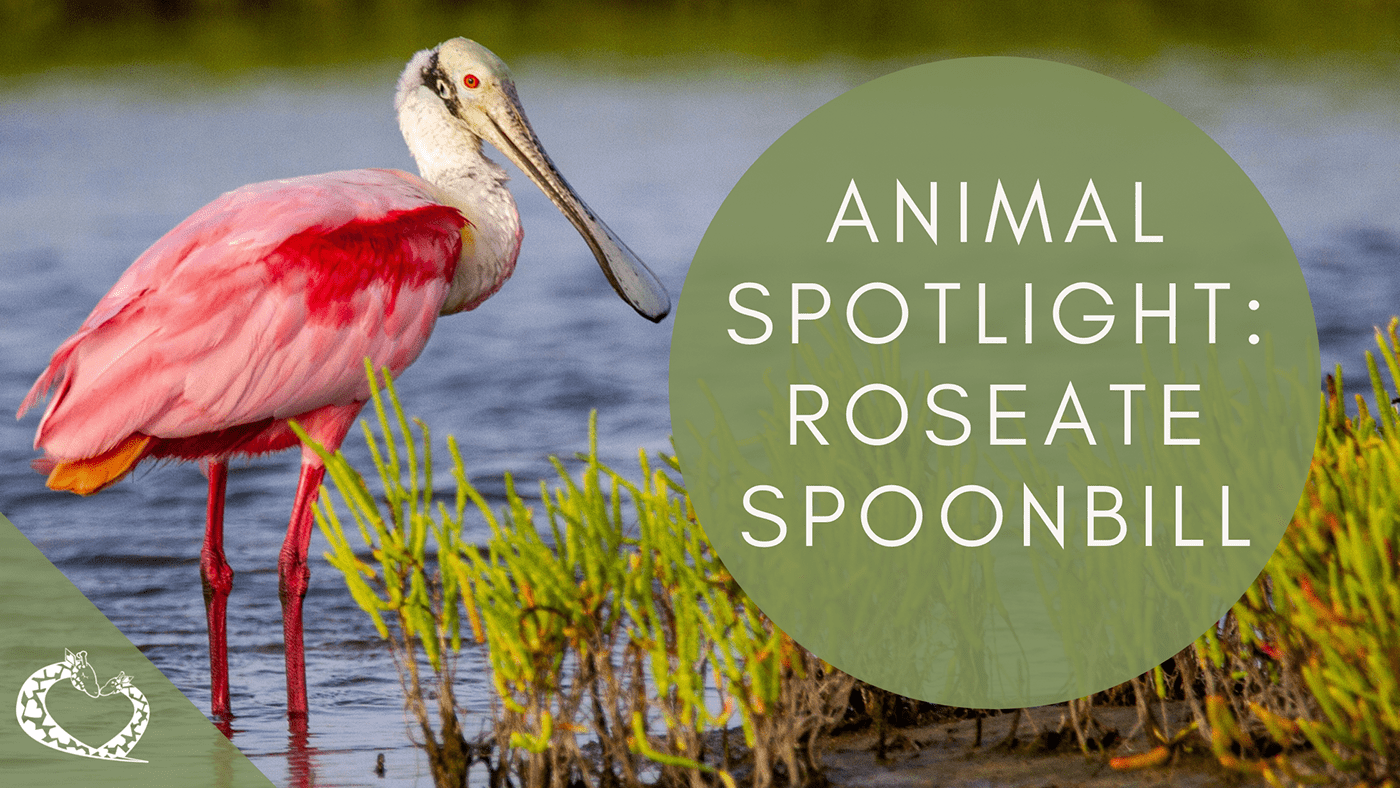
Animal Spotlight: Roseate Spoonbill
When you enter the South America Aviary at the Reid Park Zoo, there is no shortage of unusual species to catch your eye. You may be surprised by a lumbering Yellow-knobbed Curassow walking in front of you, a bird about the size of a wild turkey with glistening black feathers and a stylish curly topknot. Or you may immediately notice the Scarlet Ibis, a bright red water bird most likely sitting on a tree branch watching you unconcernedly. But what’s this? Has a flamingo escaped from the new lagoon at the front of the Zoo? The color seems correct, but there’s something funny about the bill! It’s wide, flat, and seems a little oversized for the large bird it adorns, the Roseate Spoonbill.
Roseate Spoonbills have been described as a little strange looking, but like most of nature’s creatures, they are adapted perfectly, including with that odd, flat bill, for the marshy wetlands they inhabit. They are found along the southeastern coast of the U.S., particularly in mangrove swamps, and also father south in the Antilles, Chile, Argentina, and Uruguay. Those long flat bills are well suited to their unique hunting style; they swing their heads from side to side in the water to locate minnows, tasty plants, insects, and small crustaceans. As with flamingos and other brightly colored birds, this diet has a lot to do with their gorgeous pink plumage.
They are social, and often roost in groups or pairs, though they may nest alone. Like flamingos, they sleep standing up, often on one leg, with their heads tucked under their back and shoulder feathers. Their wingspan, by the way, can reach up to 4 feet, and their football-shaped bodies are from about 28-34 inches long. When flying, they extend their necks, and at rest, curve them into a sort of “S” shape.
The mating ritual of the Roseate Spoonbill includes gift-giving, in this case the male providing nesting material for a potential mate, dancing, and wing clapping. In fact, males are responsible for providing all the nesting materials, and females usually build the nests in trees. The female lays between 1 and 5 eggs, and both parents share the incubation duties, which take between 22-24 days. Hatchlings have pink skin with a little white down, and for the first month or so are fed with regurgitated food from the adults. They are born with “normal” bills, but after about 9 days, their bills start to flatten. At only 39 days old they sport the distinctive full-sized spoonbill of their proud parents.
In the early 1900s, in the U.S., the Roseate Spoonbill was hunted nearly to extinction as women clamored for hats adorned with gorgeous plumage. Fortunately, fashion trends changed and laws were enacted in time to protect the species, but current threats include urbanization (the loss of habitat) and the effects of climate change, such as heat waves, heavy rainfall and flooding, and the rise in sea levels. All of these conditions endanger adults and impede their ability to feed and raise their young.
Soon enough, you’ll be able to walk to the Wings of Wonder in the Reid Park Zoo expansion and discover amazing species you may never have heard of! But for now, come visit the South America Aviary at the Zoo, and we’re pretty sure when you find yourself eye-to-eye with the unusual but charming Roseate Spoonbill, you’ll be eager to find out what you can do to help them survive! The staff and volunteers at the Zoo will be happy to suggest easy, small changes you can make right now to join the global fight against climate change.
For more content like this please reidparkzooexpansion.org.

